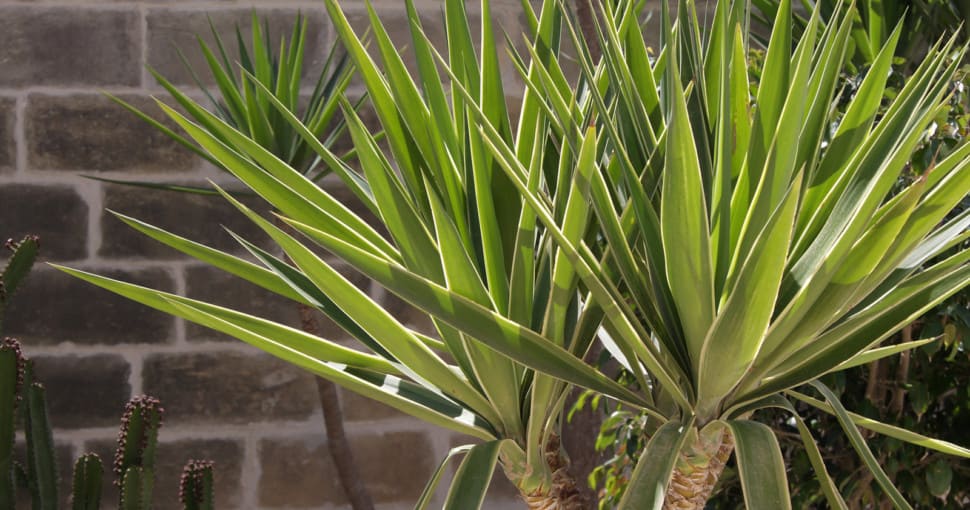With their starburst of spikey leaves, yuccas bring structure and texture to the garden. The genus encompasses many species – some tall and tree-like, others rounder and more shrub-like. These architectural plants always look best when they are surrounded by a variety of other spikey plants, especially in a xeriscape garden.
Contents
Yucca plants all have long, narrow, leathery leaves. These grow from a central rosette, both in stemless and stemmed species. Yuccas flower annually. They produce a large cluster of small, white, bell-shaped flowers.
Because they originate from arid parts of southwestern US and Mexico, Yuccas are very hardy, drought-tolerant plants. They can withstand very hot conditions but suffer in the cold.
There are a host of different plants that look similar to yucca in terms of size and shape, and compliment them in a landscape:
- Agave species – they have sword-like leaves that grow in a rosette, like yucca
- Dracaena species – often confused with yuccas due to their resemblance
- Cabbage tree – very similar spiky leaves and tree-like growth form like yucca
- New Zealand flax – colorful, spiky foliage with a similar size and growth form to yucca
- Sotol – narrow, strap-like leaves with serrated edges that splay out like yucca
- Red yucca – a fountain of narrow leaves similar to agave and yucca, but with red flowers
- Ponytail palm – looks like a tree-like yucca with the narrower strappy leaves and a swollen trunk
- Kumara plicatilis – the perfect addition to a coral-inspired garden bed
1. Agave – Agave spp.
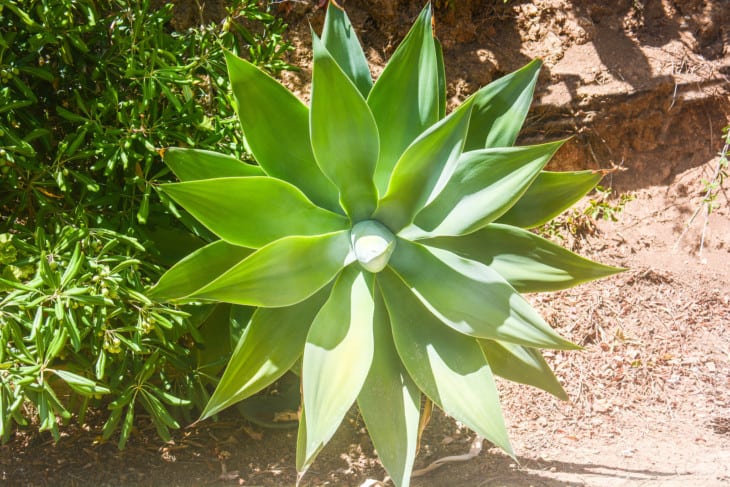
Yucca and agave belong to the same botanical family, Agavaceae. They look very similar because they both grow a rosette of long, succulent strap-like leaves. However, agave plants have sharp spikes on their leaf margins, whereas yuccas do not.
Yucca leaves are slightly straighter and thinner than agave leaves, and agave leaves have a more succulent base, compared to yucca leaves which are of uniform thickness.
Both yucca and agave grow very large and make a dramatic statement in the garden. Depending on the species and variety, they can grow to 12 feet tall and equally wide.
The leaves of agave plants grow straight out of the soil. Some yucca plants have the same growth form when they are young, but as they grow, they tend to develop a tree-like trunk.
2. Dragon Tree – Dracaena spp.
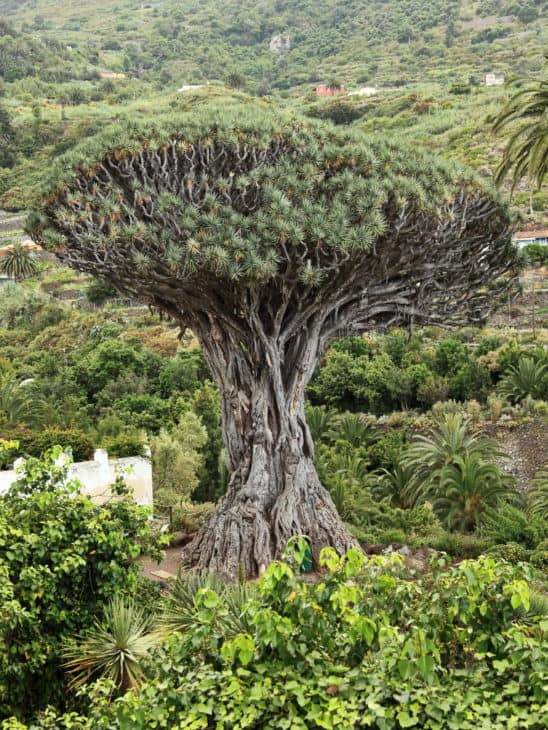
Dragon trees, also commonly known as dracaena, are frequently mistaken for yucca. They look incredibly similar, even though they come from two different plant families. Yucca belongs to the Agavaceae family, and dracaena belongs to the Asparagaceae family.
Both these plants have long, pointy, strap-like leaves and can grow very tall. When dracaena plants get big, some varieties develop multiple stems, similar to yucca’s growth form.
To tell between these two plants, look at the lower leaves. Yuccas do not drop their leaves, so they usually have dead, brown leaves attached to the trunk beneath the new green leaves. Dracaena plants drop their leaves once they die.
3. Cabbage Tree – Cordyline australis
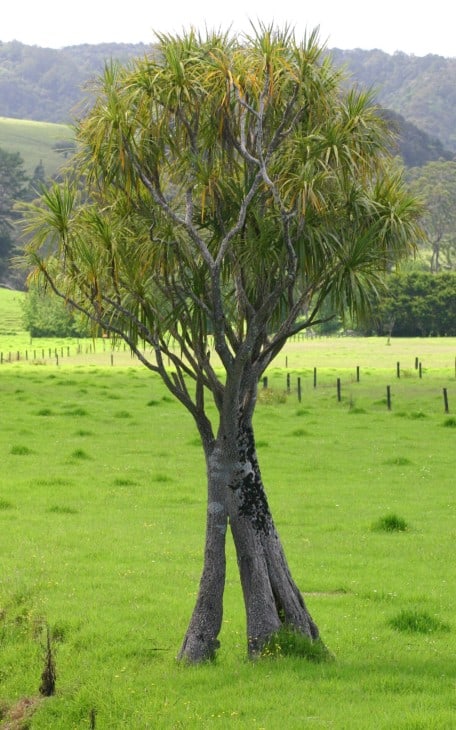
Cabbage trees’ foliage and stems look very similar to that of yucca. The two plants are distant relatives, so it makes sense that they resemble each other.
Cabbage trees, which are native to New Zealand, have long, pointed strap-like leaves that grow in a rosette. Like yucca, they develop a tree-like trunk as they get older.
Yuccas and cabbage trees even have similar looking white flowers. Both plants produce massive inflorescences that are made up of hundreds of small white blooms.
The difference between yuccas and cabbage trees is in the foliage. Yucca plants have far stiffer leaves with sharp points.
4. New Zealand Flax – Phormium spp.
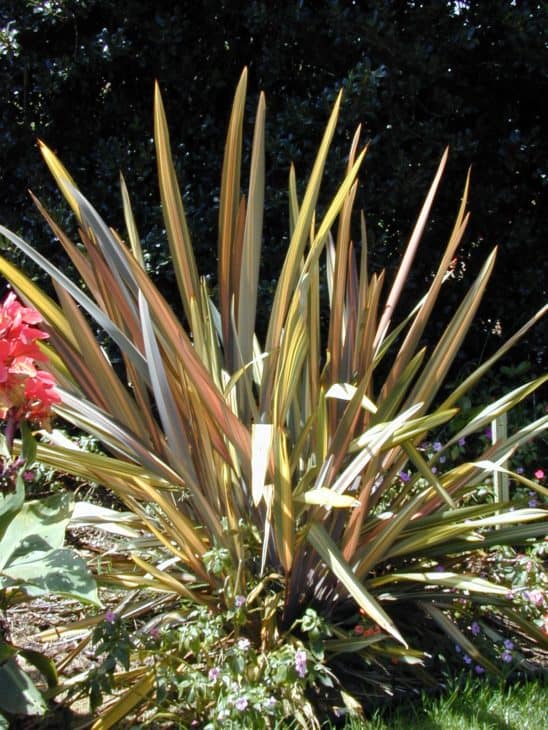
New Zealand flax, also commonly known as phormium, looks very similar to yucca and cabbage trees. The three plants are often confused with one another.
Phormiums grow extremely large and produce a spray of long, pointed, strap-like leaves. Its foliage can be variegated, and they come in a range of colors.
The difference lies in the growth form – yuccas grow a trunk as they get older, but when phormiums mature, the leaves still grow straight out of the base of the plant.
It is easy to tell New Zealand flax from yucca when the plants are in flower. New Zealand flax flowers are red and grow on a tall flowering spike.
5. Sotol – Dasylirion spp.
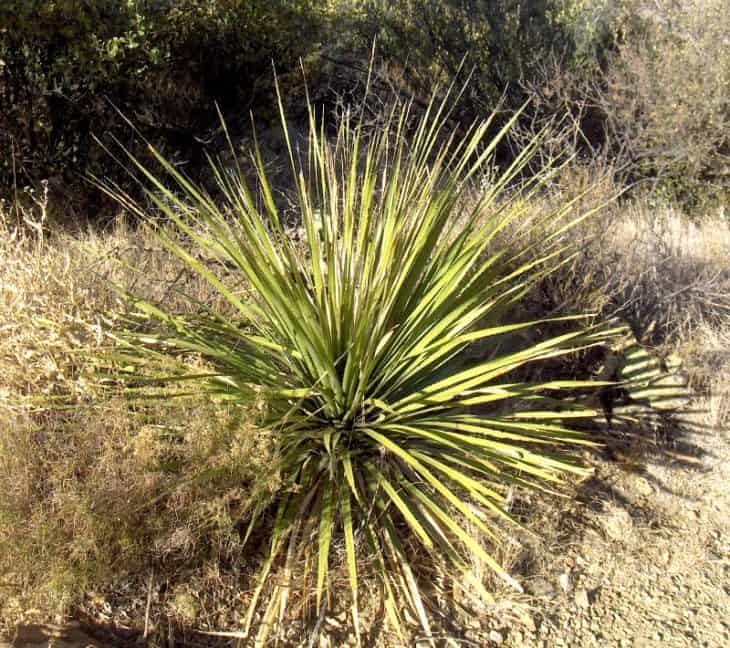
Sotol is often mistaken for yucca. The plants have a near-identical growth habit, and they both originate from the same area of the US and Mexico.
Sotol has long, strap-like leaves with serrated edges that grow in a round spray, just like yucca. But compared to yucca, sotol leaves are wider and thicker at their base. This is why sotol is commonly known as ‘desert spoon’.
Unlike yucca, sotol plants do not grow a trunk, so they do not develop that palm tree-like form. The leaves grow directly out of the ground from a central point.
6. Red Yucca – Hesperaloe parviflora
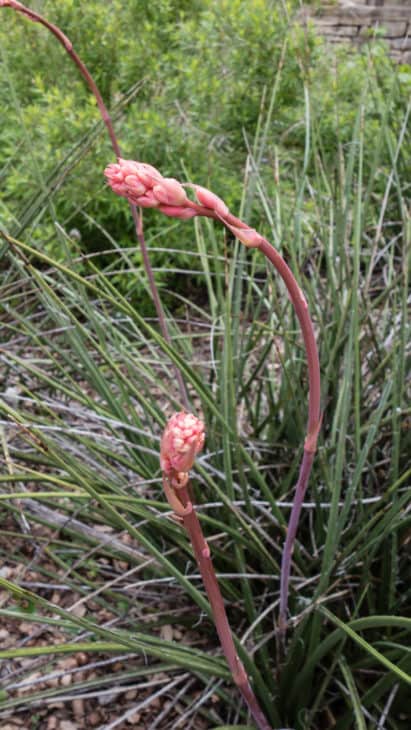
Although they share a name, red yucca is not actually yucca. It is closely related to yucca and comes from the same geographic region, but red yucca is in the genus Hesperaloe, whereas yuccas belong to their own genus.
They have long, pointy leaves that look like stiff, spikey blades of grass. Similar to some yuccas, red yucca plants have light-colored fibers coming off of the leaf margins
Unlike most yuccas, red yucca leaves are not flat. They are slightly curved along their length, particularly at the base. Red yucca does not develop a trunk, so it resembles a stemless yucca more than a tree-like yucca.
7. Ponytail Palm – Beaucarnea recurvata
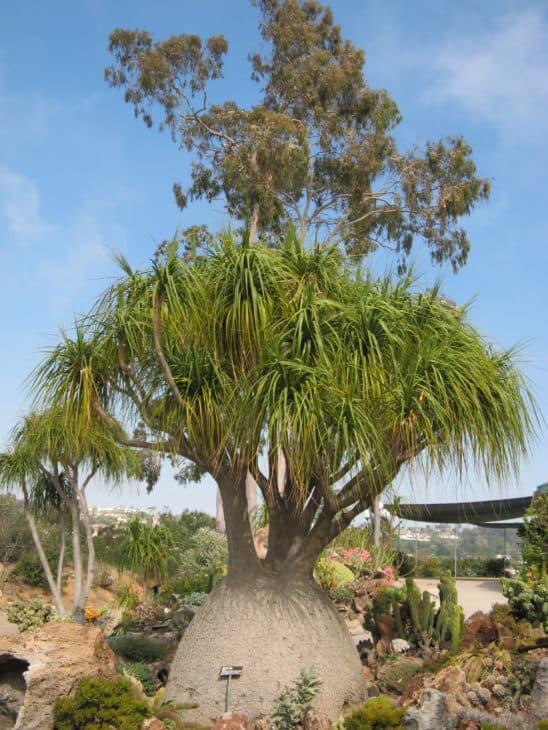
Tree-like yuccas resemble the ponytail palm. They have similar leaves and are both members of the Agavaceae family.
The ponytail palm is a popular houseplant due to its interesting structure and evergreen foliage. The plant’s other common name is elephant’s foot because the base of its trunk looks like a swollen bulb.
Gardeners use them as small trees in a landscape. Their bright green foliage splays out from a central rosette atop a long trunk. The leaves are narrow, long, and strap-like, just like yucca, but they curve downward.
8. Fan Aloe – Kumara Plicatilis
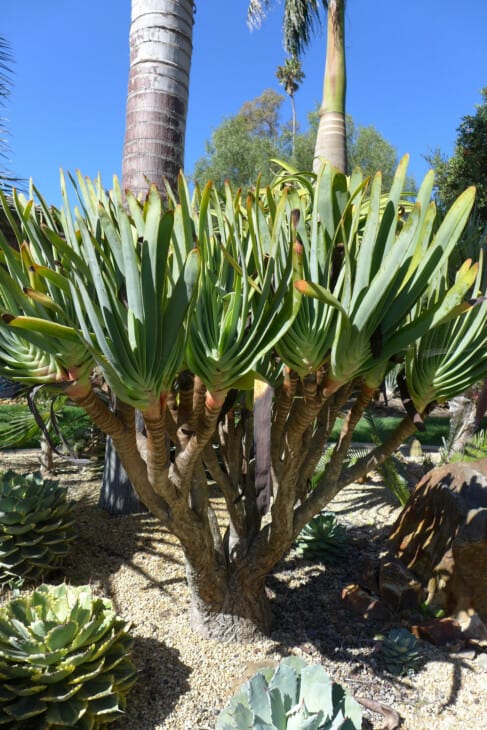
Kumara plicatilis, also known as Fan Aloe is the perfect addition to any coral-themed garden bed or display. With its strap-like leaves arranged in the shape of an open fan, this large plant can grow up to three to five meters in height.
Its beautiful, matt-green leaves with smooth margins and occasional serrations at the tips measure between 11 and 16 inches long. Enjoy a splash of orange tubular flowers in late winter or early spring.
To ensure optimal growth, sandy or rocky soil with good drainage is best suited for fan aloes. These plants are indigenous to areas that experience winter rainfall.

